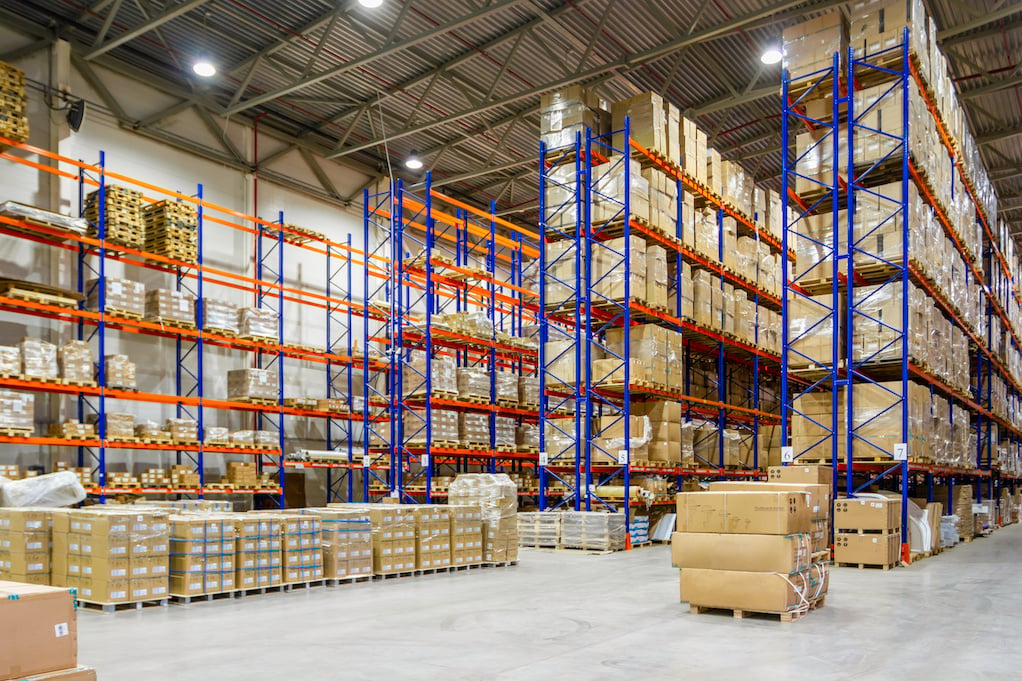You signed the lease, locked in the square footage—so what’s the biggest money-waster inside the perimeter?
Rent is just the starting point. The real budget killers hide in plain sight: inefficient layouts, soaring energy bills, and maintenance surprises that hit when you least expect them. Across a portfolio, these expenses don’t just add up—they erode profitability fast.
If you’re not paying attention, your warehouse could be costing you far more than it should. Here’s what’s driving up your operating costs—and how to stop the bleeding.
In this article, you’ll learn:
- How to optimize your footprint and avoid paying for wasted space
- The hidden costs of inefficient layouts—are you paying for air instead of storage?
- Where your money is disappearing in energy, maintenance, and logistics
- How to ensure your facility is built for efficient shipping and receiving

1. Wasted Space
Not all warehouses are created equal—even if they have the same footprint.
A 500,000-square-foot warehouse with a 24-foot clear height offers significantly less usable storage than one with a 36-foot clear height. This is obvious, but do you know just how much cubic storage can be unlocked with optimization?
How Much Space Are You Really Using?
|
Size (Sq. Ft.) |
Clear Height (Ft.) |
Total Cubic Feet |
Potential Pallet Positions (Est.) |
|
500,000 |
24 |
12,000,000 |
60,000 |
|
500,000 |
36 |
18,000,000 |
90,000 |
A 50% increase in clear height can provide up to 50% more storage capacity, reducing the need for additional leased space.
Poor Space Utilization: Paying for Air Instead of Storage
Even with the right clear height, inefficient layouts can waste valuable warehouse space. Just because you have square footage doesn’t mean you’re using it effectively.
Racking configurations are the key to maximizing your cubic footage:
- Bad racking design creates bottlenecks in picking and storage, reducing operational efficiency.
- Underutilized mezzanine areas could provide extra storage or office space at a fraction of the cost of leasing more warehouse square footage.
- Standard pallet racking typically stacks 3-4 pallets high in a 24’ clear height warehouse.
- With 36’ clear height, you can stack 5-6 pallets high, increasing storage density by 30-50% when optimized correctly.

Solution: Maximize Vertical Storage
Investing in high-bay racking and automated storage and retrieval systems (AS/RS) can boost efficiency and prevent unnecessary expansion costs.
- Underutilized vertical space forces tenants to lease more square footage than necessary, driving up costs.
- Instead of leasing an additional 250,000 SF at $5/SF ($1.25M/year), a tenant could optimize existing space with high-bay racking and AS/RS.
- Low clear heights limit storage capacity, leading to inefficient space use and higher rent burdens.
Smart storage solutions can transform wasted airspace into cost savings.
2. Energy Costs
Even with extra space, if you’re not actively managing the operating expenses, you’re losing money. Again, imagine the gravity of this impact across an entire portfolio.
For example, energy is one of the largest ongoing expenses in warehouse operations, and electricity rates have risen by over 20% in the past five years in many industrial markets. Unlike rent, which is a fixed cost, energy expenses fluctuate and can quietly drain profitability if left unchecked.
Where Is Your Warehouse Wasting Energy?
|
Energy Drain |
Cost Impact |
Potential Savings |
|
Inefficient Lighting |
Metal halide and fluorescent fixtures use 50-80% more energy than LEDs. |
LEDs cut lighting costs by 60-80%. |
|
Poor HVAC Systems |
Heating/cooling a 500,000 SF warehouse can cost $2M+ annually. |
High-efficiency HVAC can reduce costs by 20-40%. |
|
Outdated Insulation |
Poor insulation leads to extreme temperature fluctuations, increasing HVAC load. |
Insulation upgrades can cut energy loss by 30-50%. |
The exact HVAC costs vary widely depending on location, climate, energy rates, building type, and HVAC efficiency. However, in a large 500,000 SF warehouse, especially in regions with extreme temperatures, HVAC can indeed cost $1M-$3M+ annually. This would be the upper range of HVAC costs in more extreme climates (e.g., colder or hotter regions).
Installing more energy-efficient HVAC systems and using technologies like smart thermostats and energy recovery ventilation can reduce HVAC energy use by 20–40%. These savings are common, but the percentage can vary depending on how outdated the old system was.
On top of this. Poor insulation leads to extreme temperature fluctuations, increasing HVAC load.Heat loss in winter and heat gain in summer, which forces the HVAC system to work harder, leading to higher energy bills.
Let’s look deeper at the numbers:
- Lighting accounts for up to 40% of a warehouse’s total energy consumption.
- Every 1°F change in temperature inside a warehouse can increase HVAC costs by 3-5%.
- Leaky insulation and outdated roofing can cause an additional 10-30% in wasted energy annually.

3. Rising Maintenance & Repair Costs: A Growing Liability
Warehouses take a constant beating, and if maintenance isn’t proactively managed, repair costs can spiral out of control—especially for tenants in a triple net lease (NNN), where they bear the full financial burden.
Common High-Cost Repairs:
-
Floor Damage: Forklifts and heavy loads cause cracks, requiring resurfacing that can cost $2-$5 per square foot. This depends on the flooring type too. According to Fixr, basic concrete resurfacing and repairs range from $4 to $10 per square foot.
-
Roof Leaks: Aging roofs lead to leaks that damage inventory and cost upwards of $50,000 for major repairs.
- Dock Door Wear & Tear: High-traffic docks are prone to wear, impacting productivity and worker safety, with replacement costs ranging from $5,000 to $25,000 per door. Learn about:
Warehouse Docks and Doors.
These costs aren’t just inconvenient—they add up fast. And depending on your lease type (gross vs. triple net), the responsibility for covering them may fall on you, not the landlord.
Before signing a lease, negotiate maintenance responsibilities upfront. Ensure preventative maintenance is a priority to avoid costly surprises down the road.

In negotiation, the age of the facility and its roof should play a major part. Older buildings are more likely to demand maintenance or repairs.
With triple net leases, push for landlord-funded improvements or request a cap on maintenance costs to prevent unexpected financial strain.
4. Inefficient Dock Operations: Delays Cost Money
A poorly designed loading dock doesn’t just slow down shipments—it inflates labor costs, delays orders, and disrupts your supply chain. Every extra minute a truck sits at your dock adds to detention fees and wasted productivity.
- Not Enough Dock Doors: A shortage of dock doors creates bottlenecks during peak shipping hours, leading to delays and higher labor costs. The industry standard is one dock door per 10,000 square feet, but high-volume operations often require more.
- Poor Ingress/Egress Design: If truck access is too tight or loading areas aren’t properly designed, maneuvering delays pile up, and inefficient turnarounds mean fewer shipments per hour.
- Lack of Cross-Docking Capability: Without the ability to transfer goods directly from inbound to outbound trucks, companies end up paying for unnecessary storage, inflating warehouse costs.
%20(1).jpg?width=1022&height=681&name=warehouse%20loading%20docks%20(1)%20(1).jpg)
Solution: Ensure your dock-to-space ratio aligns with operational needs, optimize traffic flow, and, where possible, integrate cross-docking to minimize storage expenses. Read more on this topic here:
Mastering the Flow of Ingress and Egress.
The Cost of Complacency: Your Warehouse Deserves Better
If your warehouse is bleeding money, the problem isn’t just the lease—it’s how the space is used, maintained, and powered. Every square foot of wasted storage, every inefficient dock operation, every unchecked energy drain adds up to one thing: lost profitability.
The difference between a cost-efficient warehouse and a financial black hole comes down to choices.
Doing nothing isn’t an option. In today’s market, margins are tight, operating costs are climbing, and inefficiencies are an anchor on your bottom line. The companies that thrive aren’t just those that lease the right space—they’re the ones that actively manage it to work smarter, not harder.
So the question isn’t whether your warehouse is costing you—it’s how much. To learn more, sign up for our free Warehouse Tour Checklist video course today!







